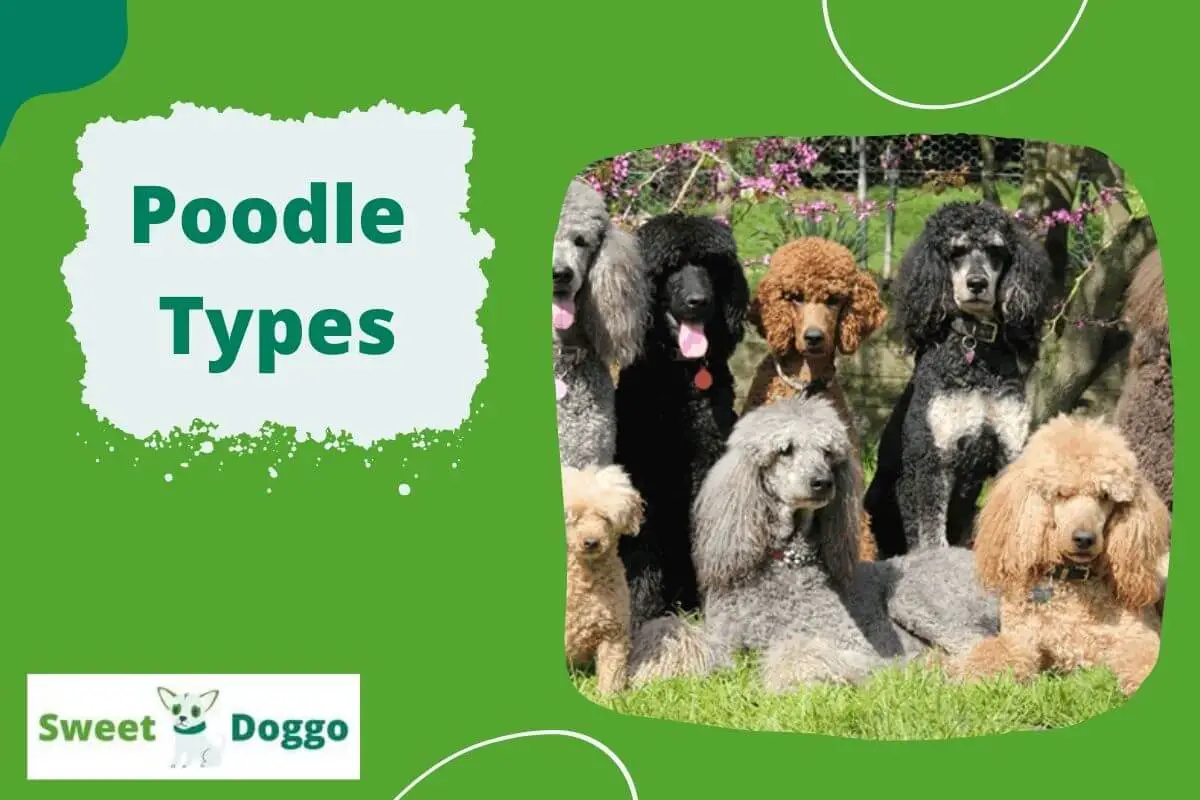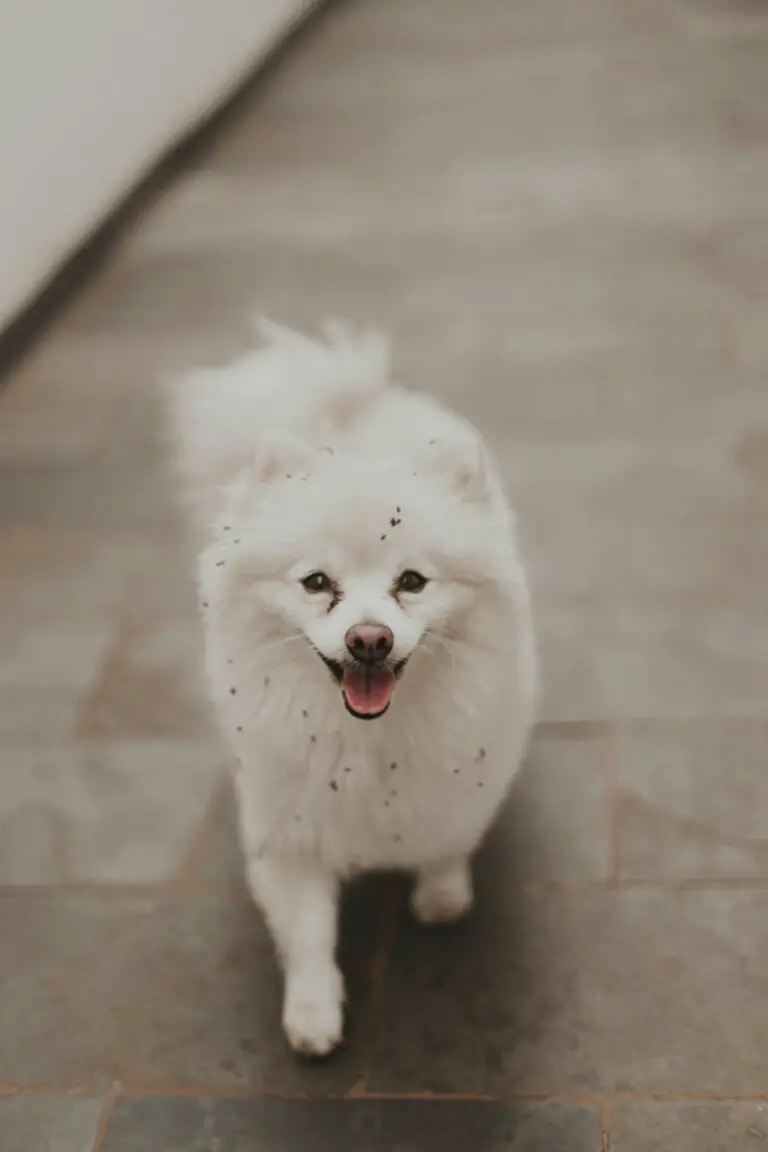Thinking of buying or adopting a poodle, but don’t know which one to choose? Without a doubt, this is one of the most popular dog breeds around the world. They are very intelligent, striking, and affectionate, capable of integrating into the family quickly; however, sometimes the choice can be difficult because not all poodles are the same.
Keep reading below to find out what the varieties of poodles are, their different colors, and other characteristics that you should take into account.
Table of Contents
How many types of poodles are there?
The American Kennel Club (AKC), the British Kennel Club (BKC), and other world-renowned organizations only recognize 3 types of Poodles: the Standard Poodle, the Miniature Poodle, and the Toy Poodle.
In the case of the International Cynological Federation (FCI), the largest association of Kennel Clubs around the world, all of the above are recognized plus a fourth type, the medium poodle. In addition, poodle breeders and admirers also count the Teacup Poodle as another variation within the breed.
In general, there are 5 types of poodle (4 recognized by the FCI + 1 outside the standard):
- The standard poodle, large poodle, or giant poodle
- The medium poodle or Moyen poodle
- The miniature poodle or toy poodle
- The toy poodle or mini poodle
- Teacup poodle
Note: It should be noted that these are not different breeds, but different sizes of the same dog. As the name suggests, the 5 specimens differ basically in size, but this is known to give rise to certain variations in other traits and aspects.
Standard or giant poodle
- Life expectancy: between 10 and 18 years
- Height: 18 to 24 inches (approximately 45 – 60 cm)
- Male Standard Poodle Weight: 60 to 70 pounds (27 – 31 kg)
- Female Standard Poodle Weight: 40 to 50 pounds (18 – 22 kg)
The standard poodle is the largest of the breed; in fact, some call it a giant poodle. The other types were developed from it. Despite its traditional pampered appearance, this is an energetic and agile dog.
Due to its innate elegance and good jumping ability, it is a regular candidate for dog shows and competitions. According to experts, the standard poodle still retains all the abilities of its ancestors, unlike its other relatives within the breed.
It is surprisingly smart and easy to train. You need to always be on the go, engaging in mentally stimulating activities. He is not the typical dog that can be left lying in the yard with nothing to do.
The Giant Poodle is perfect for playing challenging games and enrolling in advanced obedience and agility classes. He is also good as a guard dog; he can protect the family from him without being too aggressive.
Curly, Dense Coat – Generally requires regular trimming every 4 to 6 weeks. One of the best features of the Standard Poodle is that it sheds little and is hypoallergenic.
Diseases: Although it can be affected by the common health problems that affect the rest of the breeds (patellar luxation, trichiasis, cataracts, glaucoma, ductal atresia), this poodle is considered to be a mostly healthy dog.
Medium poodle
- Life expectancy: between 12 and 15 years
- Height: 14 to 18 inches (approximately 35 – 45 cm)
- Weight: 20 to 35 pounds (9 – 15 kg)
Of European origin, this type of poodle could be described as somewhere in the middle between miniature and standard size. Unlike the poodles mentioned above, the medium poodle ( mean, Klein, Moyen ) is not recognized by the AKC as an official variety, hence it is not accepted at some dog shows. However, the FCI does include this dog in its list of poodle types.
Like any other poodle, he makes an excellent companion thanks to his intelligence, comical attitude, and eagerness to please his owners. It is said that an untrained or poorly trained Medium Poodle tends to develop “small dog” syndrome (the dog thinks he is the boss), which is why it is so important to provide him with good training from puppyhood.
Miniature poodle
- Life expectancy: between 10 and 18 years
- Height: 11 to 14 inches (28 – 35 cm)
- Weight: 10 to 15 pounds (4.5 – 6.8 kg)
Larger than the toy poodle, but smaller than the standard poodle, this type of toy poodle is best suited for those who want a poodle that is neither too big nor too small. Like his brothers, he is a very sensitive, intelligent, active, and obedient dog.
Although he is quite devoted to his owner, with proper socialization he can open up to other dogs, other pets, and children. In a general sense, it has the same personality as the standard poodle and is an excellent companion for families.
Dense Curly Coat – This is also hypoallergenic and should be trimmed regularly.
Diseases – It is affected by the general health problems that affect all dogs. In most cases, they are conditions that can be treated, mitigated, or eliminated.
Toy or mini poodle
- Life expectancy: between 10 and 18 years
- Height: no more than 11 inches (approximately 28 cm, ideal 25 cm)
- Weight: 4 to 6 pounds (2 – 3 kg)
The toy, mini or toy poodle is the smallest of the three types of poodle recognized by the AKC. If a lovable, lapdog is what you’re looking for, then you can’t go wrong choosing a poodle of this size.
Unlike the older brothers, his physical build is square in shape; which means his height is equal to its length. Despite such differences, the mini toy poodle is athletic, active, and graceful.5
Another distinctive feature of the toy poodle is related to its character. Sometimes he can be a nervous, shy or skittish dog; any conflict or fast-paced activity can be stressful for your mind.
It can be involved in competitions where it has to jump, run and retrieve, but it is definitely not a suitable pet for hunting or roughhousing with other dogs.
Curly and dense coat: it is necessary to trim it every 4-6 weeks to avoid big knots. Their fur does not shed easily either, it is hypoallergenic and it can come in various colors.
Diseases – The toy poodle is often affected by chondrodysplasia, a common health problem among toy breeds.
So far we have seen how to differentiate the 3 main types of poodle, however, many breeders and agencies recognize that there are other varieties of poodle, also determined by size. These are:
Teacup poodle
- Life expectancy: between 15 and 20 years
- Height: 9 inches or less (22 cm or less)
- Weight: 2.6 pounds (1.17 kg)
As its name suggests, this is the tiniest of all the poodles. There is no universal standard; any poodle whose size is smaller than the toy size is considered a teacup poodle. It can be the perfect pet for apartment living.
He’s an active indoor dog, adapting well without the need for a yard, but that’s not to say he doesn’t enjoy some exercise outdoors ( daily leashed walks are recommended ).
For a poodle of its size, life expectancy is quite long, however, it is still prone to the health problems that affect its breed and other small dogs.
What color can poodles be?
Size is definitely not the only thing that matters when choosing a poodle; Another characteristic that can determine the choice of your pet is the color. In case you didn’t know, poodles can come in a wide variety of colors or color combinations.
Here is a brief summary of the most common shades and some basic details so you know how to identify each type of poodle.
Black and white
White Poodle: Most white poodles are pure snow-white color. However, some breeders may recognize other shades as white as well, for example, an apricot or beige tinted white. The presence of a little black is acceptable, but there should never be noticeable flecks in the white.
Black Poodle: The true black poodle is a deep jet hue, which will not fade over time. The coat will not have any blue or silver tint to it and when shaving its face it will also be a deep black. The points are black and the eyes are dark brown.
Blues, Silvers and Grays
Blue Poodle: This is a diluted black color. All blue poodles are born black and then become lighter as the pup gets older. This often occurs within the first year, but can take up to 2 years in some cases; this is why many blue poodles are registered as black.
The blue poodle’s outer coat is usually as dark as a black’s, but the root hairs show a mixture of colors. The amount of each color will depend on the age of the dog, for example in middle-aged dogs medium brown predominates.
True blue poodles will have black points and dark brown eyes. (upper quadrant in the image)
Gray Poodle: Some poodles are born gray and stay gray, however, it is common for some black poodles to turn gray by the age of 4-5 years. (lower right quadrant in the image)
Silver Poodle: The true silver poodle is born black and lightens at the age of 2 years, but you can tell it apart as early as the age of 6 weeks, when the face and legs fade, while the rest of the coat remains intact.
This hue can be described as a diluted gray. The dog will have black dots and dark brown eyes. (lower left quadrant in image)
Browns, Apricots, and Reds
Brown Poodle: The brown poodle is a strong, deep color, not to be confused in any way with the ( much lighter ) café au lait. Pure brown poodles should have liver-colored (purplish-red) points and dark amber eyes.
They can sometimes be as dark as black or have a more reddish-brown hue. (upper right quadrant in the image)
Apricot Poodle: Next to red, apricot was one of the last colors recorded for this breed. From an apricot poodle, a red can be produced. Some are so light that they can appear cream-colored, however, there should always be a slight red tint to their hair.
The true apricot poodle will have some black spots on its fur. (lower quadrant in the image)
Red Poodle: The red poodle is a new addition to the breed’s color spectrum; they are still relatively rare. They were developed from the apricot line, hence some can be as light as apricot-colored poodles; dark mahogany color is also frequent.
Although liver-colored dots are acceptable, black is preferred. (upper left quadrant in the image)
Creams, Coffee with milk and Beige-Silver
Cream Poodle: You’ll know a poodle is a cream, rather than silver-beige or café au lait if its nose is black. The points of this dog are always black. It is possible to find poodles with a very nice combination of cream and white. (upper quadrant in the image)
Cafe au lait Poodle: This is a bright light tan color, which some confuse with silver beige. It is not uncommon for the pup to be born brown and then lighten to this color. A cafe au lait poodle should have liver-colored points and dark amber eyes.
A puppy that is beige at birth is not a latte. (lower right quadrant in the image)
Silver-Beige Poodle: This is a diluted brown, therefore a true silver-beige Poodle is going to be born brown. At 6 weeks, the silvery beige begins to appear on the face and legs, with the complete change of coat being achieved by the age of 2 years. The dog will have liver-colored points and dark amber eyes.
It is sometimes confused with the cafe au lait poodle. (lower left quadrant in image)




